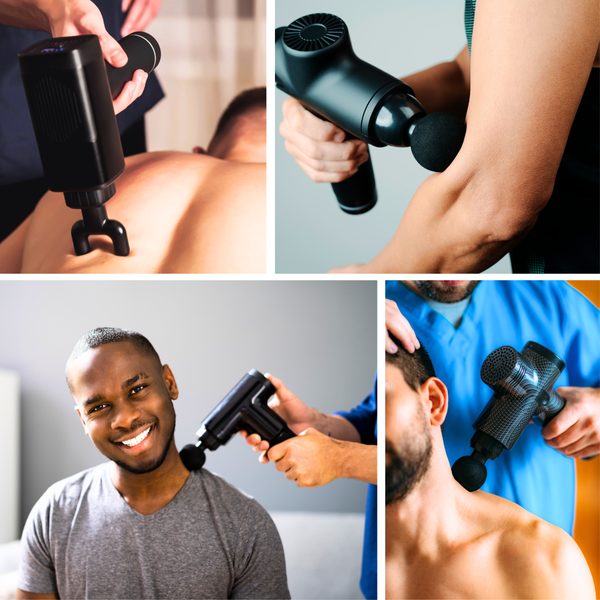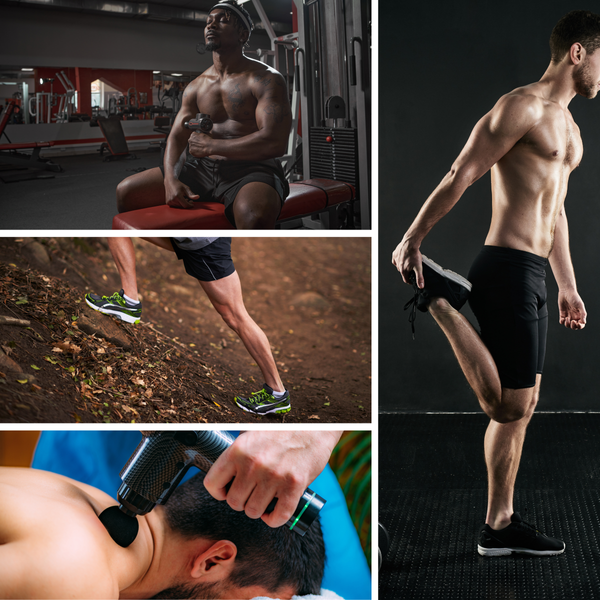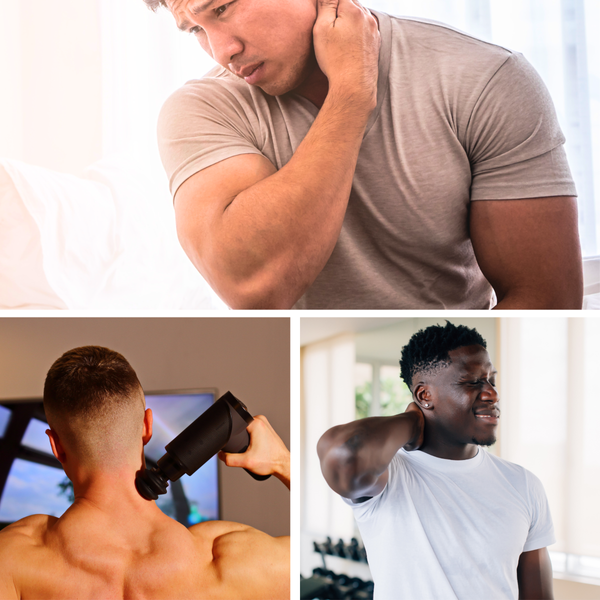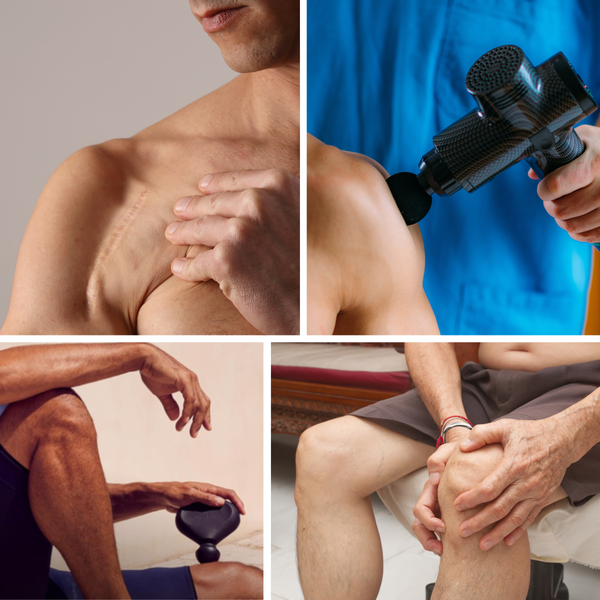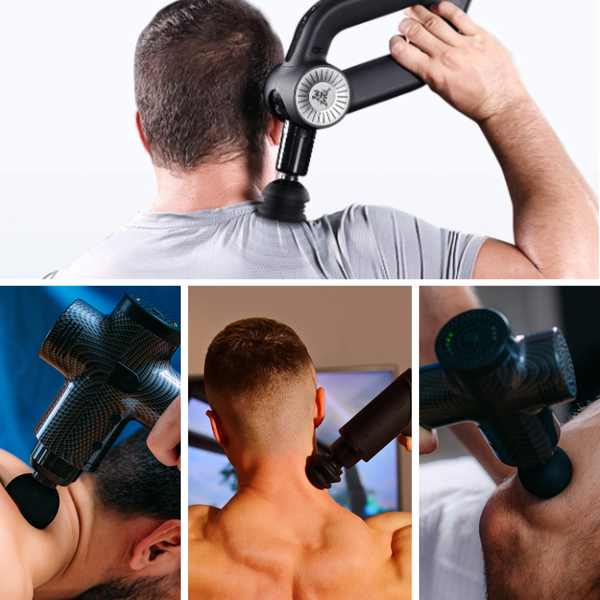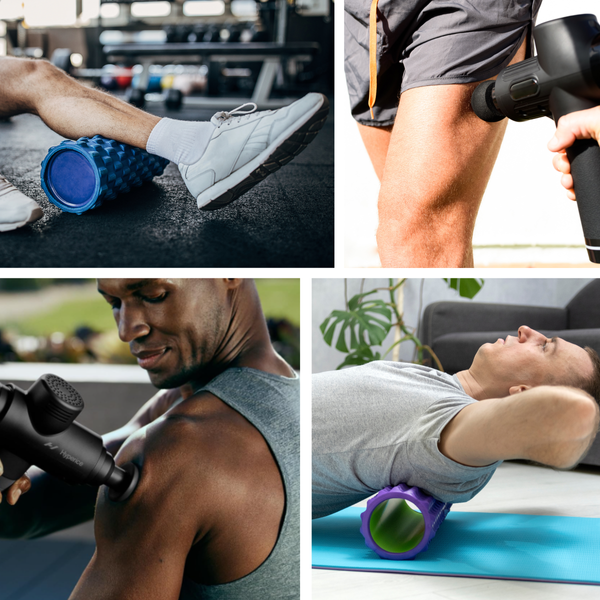Massage guns have become a popular tool for athletes and individuals seeking relief from muscle pain and tightness. But with so many different opinions and recommendations, it can be challenging to determine how often you should use a massage gun. This comprehensive guide will provide you with the information you need to make informed decisions about your muscle recovery routine.
Key Takeaways:
- Understand the ideal frequency for using a massage gun based on your activity level and muscle recovery needs.
- Learn about the benefits of massage guns for relieving muscle tension, reducing soreness, and aiding recovery.
- Discover the best practices for using a massage gun to maximize its effectiveness and avoid potential harm.
Understanding Massage Guns and Their Purpose
Massage guns, also known as percussive or vibration therapy devices, are designed to relieve muscle tension and soreness through rapid, repetitive strokes. They work by delivering concentrated pressure deep into the muscle tissue, which can help to break up knots and increase blood flow. This form of massage therapy is particularly beneficial for those experiencing delayed onset muscle soreness (DOMS) or chronic pain.

The Science Behind Percussive Therapy
Percussive therapy, the principle behind massage guns, is a form of soft tissue manipulation that aims to reduce muscle stiffness and improve flexibility. By increasing blood circulation and stimulating the lymphatic system, massage guns can help flush out lactic acid buildup and promote faster recovery. Studies in human movement science have shown that percussive therapy can be effective in reducing bodily pain perception and aiding muscle recovery.
How Often to Use a Massage Gun for Optimal Recovery
The frequency of using a massage gun can vary depending on several factors, including your level of physical activity, the presence of muscle knots or scar tissue, and your overall health. For active individuals, using a massage gun as part of a warm-up routine or immediately after a full body workout can help activate muscles and prevent muscle fatigue. On rest days, a lighter session can maintain muscle mobility and reduce muscle spasms.
Tailoring Your Massage Gun Sessions
It's important to listen to your body and adjust your massage gun sessions accordingly. If you're experiencing acute soreness, up to two minutes on a specific muscle region can provide relief. For general maintenance or to relieve stress, shorter sessions spread throughout the week may suffice. Always consult with a physical therapist or healthcare professional if you have concerns about your muscle health or if you're recovering from recent bone fractures.
The Role of Massage Guns in Muscle Activation
Before engaging in physical activity, using a massage gun can help activate muscle areas that may be dormant due to sedentary behavior. This pre-activity use can prepare the thigh muscles, shoulder muscles, and other larger muscle groups for exercise, potentially enhancing athletic performance.

Understanding Delayed Onset Muscle Soreness (DOMS)
When we talk about delayed onset muscle soreness, or DOMS, we're referring to that achy feeling that creeps in anywhere from 12 to 24 hours after a good workout. It's a natural response to the micro-tears in muscle fibers that occur during exercise, especially after engaging in activities your body isn't used to. Percussion therapy, delivered by a massage gun, can be a game-changer here. By targeting specific muscle groups with a percussive massager, you can help reduce muscle soreness and accelerate the healing process of these tiny tears, making it a go-to solution for fitness enthusiasts.
The beauty of using a massage gun for DOMS lies in its ability to increase blood flow and reduce lactic acid build-up in the muscles. This not only helps in alleviating pain but also contributes to a faster recovery, allowing you to get back to your training regimen with less downtime. Remember, while it's tempting to go full throttle on the affected areas, a gentle approach with a relaxation massage gun can be just as effective. The goal is to soothe the tight muscles gently, not to exacerbate the soreness.
Massage Guns for Post-Workout Recovery
Post-exercise, massage guns work to aid muscle recovery by reducing lactic acid buildup and relieving muscle tension. For optimal post-workout recovery, a professional percussion massage targeting the engaged muscles can help reduce muscle soreness and increase muscle mobility.
Addressing Tight Muscles and Muscle Knots
For those with tight muscles or muscle knots, a massage gun can be a powerful tool. By focusing on trigger points and applying pressure for up to two minutes, you can alleviate muscular stiffness and improve blood circulation to the affected areas.

Pre-Workout Warm-Up with Massage Guns
When it comes to priming your muscles for a workout, a percussion massager can be a game-changer. By targeting a specific muscle group before exercise, you can enhance your warm-up routine, increasing blood flow and reducing muscle tightness. This proactive approach not only prepares your muscles for the physical activity ahead but also helps in preventing injuries. A brief session with a massage gun can stimulate the muscles, making them more pliable and ready for action. It's like giving your muscles a heads-up, ensuring they're awake and eager to perform.
Using a relaxation massage gun during your warm-up can also help in reducing the lactic acid build-up that often occurs during exercise. By setting the stage for optimal post-workout recovery, you're effectively telling your muscles, "We've got this!" It's not just about the immediate effects; it's about paving the way for a smoother recovery process. So, next time you're gearing up for a gym session, consider reaching for that percussive massager to give your muscles a well-deserved wake-up call.
Massage Guns and Rest Days: Keeping the Momentum
Rest days are crucial for any fitness regimen, but that doesn't mean you should completely neglect your aching muscles. On the contrary, using a massage gun on your off days can be incredibly beneficial. It's a gentle way to maintain momentum in your recovery process without overexerting sore muscles. Think of it as a maintenance mode for your body, where you're still contributing to muscle recovery and increasing blood flow, but at a more relaxed pace. This can help alleviate muscle tightness and ensure that you're in top shape for your next workout.
Moreover, relaxation massage guns can serve as a tool for a therapeutic self-care session, targeting those stubborn knots and areas of chronic muscle tightness. It's like having a personal masseuse at your disposal, ready to work out the kinks whenever you need it. By incorporating a percussion massager into your rest days, you're not just taking a break; you're actively investing in your body's ability to bounce back stronger. So, while you're lounging or catching up on your favorite series, remember that a quick massage gun session can do wonders for your recovery journey.
Chronic Pain and Percussion Therapy
Individuals with chronic pain may benefit from regular massage gun sessions. Percussion therapy can help in reducing muscle stiffness and transmitting pain signals, thereby decreasing the overall perception of pain. However, it's crucial to use the device correctly to avoid aggravating any underlying conditions.

Frequency Recommendations for Different User Groups
- Athletes: Daily use, particularly after training sessions, to reduce muscle soreness and enhance recovery.
- Fitness Enthusiasts: 3-4 times per week, focusing on muscle groups used during workouts.
- Individuals with Chronic Pain: As recommended by a healthcare provider, often several times per week.
- General Wellness: 2-3 times per week for maintenance and stress relief.
Best Practices for Using a Massage Gun
To maximize the benefits of a massage gun, it's essential to use it properly. Start with a lower intensity and gradually increase as needed. Avoid using the device on any area with skin discomfort or over connective tissue that's close to bones. Always keep the massage gun moving to prevent bruising and engage targeted muscles effectively.
Combining Massage Guns with Other Recovery Methods
For a comprehensive recovery strategy, consider combining massage gun therapy with other methods such as heat therapy, stretching, and proper hydration. This multifaceted approach can help improve overall muscle health and support the immune system.
The Impact of Massage Guns on Blood Circulation
By increasing muscle flow, massage guns can play a significant role in enhancing blood circulation throughout the body. This improved circulation not only aids in recovery but also helps in delivering nutrients to muscle fibers and soft tissues.

The Role of a Physical Therapist
Consulting with a physical therapist can provide personalized guidance on using a massage gun. They can assess your muscle recovery needs and recommend a routine that aligns with your fitness goals and current health status. A physical therapist's expertise is invaluable in preventing injury and ensuring that you're using the device correctly.
Understanding the Limitations of Massage Guns
While massage guns can offer numerous benefits, they are not a cure-all. It's important to recognize their limitations and not rely solely on them for muscle recovery. They should be used as part of a balanced approach that includes physical therapy and regular exercise.
Safety Considerations When Using a Massage Gun
Safety should always be a priority when using a massage gun. Avoid using the device on any areas with recent bone fractures or open wounds. If you experience increased pain or discomfort during use, stop immediately and consult a healthcare professional.

Summary
Massage guns are a valuable tool for relieving muscle tension, reducing soreness, and aiding recovery. The frequency of use should be tailored to individual needs, with considerations for activity level, muscle condition, and overall health. By incorporating massage gun sessions into your routine responsibly and combining them with other recovery methods, you can achieve maximum benefits and maintain muscle health.
FAQ Section
Q: Can using a massage gun too often be harmful?
A: Yes, overuse of a massage gun can lead to muscle damage or bruising. It's important to use the device as recommended and pay attention to how your body responds to the therapy.
Q: Should I use a massage gun before or after a workout?
A: A massage gun can be used both before to activate muscles and after a workout to aid in recovery. The key is to adjust the intensity and duration based on your needs at the time.
Q: Is it safe to use a massage gun every day?
A: For most people, using a massage gun daily, especially after intense physical activity, can be beneficial. However, it's crucial to listen to your body and give yourself rest days if needed. Always consult with a healthcare professional if you're unsure about the frequency of use.





